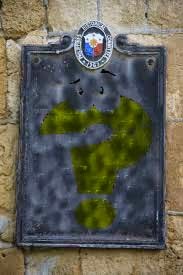In the boundaries of Manila and Caloocan near R. Papa sits one of Manila's oldest
big cemeteries- the Campo Santo De La Loma.
Its almost a wk before Haloween, and This morning as we enter the world beyond
and gain a true cemetery experience. care of Walk with Chan, Get ready to be
wowed by the resting places of Manila's dead, from a few hundred yrs ago til
present.and uncover a unique side of Filipino and Chinese Culture.
Note:a similar Cemetery tour can be found here by clicking this
One of the oldest cemeteries in Old Manila, and less than 55 hectares, The
Campo Santo de La Loma was opened in 1884 and was known as originally
known as Cementerio de Binondo. (as it was formerly part of the jurisdiction
of Santa Cruz, Manila during the Spanish colonial period). Today, one enters
the former Binondo cemetery from Jose Abad Santos, near R. Papa Station.
it is owned by Diocese of Caloocan and Archdiocese of Manila
A barrier has been placed to devide it from its neighbor the chinese cemetery.
its famous attraction aside from the gun near the entrance
this cemetery escaped the ravage of World War II and was lucky to have preserve most
of its historical 130 yr old heritage architecture.
 |
One of the oldest cemeteries in Old Manila
|
Rence took us on a walk through Philippine History and talks about the Chinese's
contribution in society during the Jap. occupation in 1942
this 3 hr walking tour is a combination of Philippine history and Old Manila cemetery
and church architecture that was 80% preserved, the tour includes stops at
he old Chapel of Pancratius, and a stroll in front of known Mausoleums of famous
dead citizens. Lawrence don’t just show you the Mausoleums and tombs on every
sites: he tell you the stories. Come along on this family-friendly tour of one of this
nation’s most sacred grounds. THE LA LOMA CATHOLIC CEMETERY.
Below are a set of pictures I took of the Chapel without the NHCP marker
 |
| BELOW are pics of the interior shot, they are rare pictures I can say, that future interior pictures of this chapel that you search via google are taken from this tour. either from me, or my friends. |
 |
| interior shot before 1916 photo from Manila Nostalja |
 |
| "cross" 1887 |
 |
| side windows left |
 |
| interior ceiling with 2 pairs of hanging chandeliers |
 |
| right side shot of the windows |
trivia:
Harrison Plaza and other areas in Manila used to be cemeteries.
Monument of a cemetery located at the south west of Fort San Antonio Abad. The area is where the
present-day Harrison Plaza now stands.
As a result of modernization, some sacred burial grounds had to be wiped out to be replaced by
commercial buildings. Such is the case with an old cemetery located southwest of an area once known
as Fort San Antonio Abad in Malate, Manila. The area is now occupied by the Harrison Plaza, also known
as the country’s first modern mall.
But Harrison Plaza is not the only one that lies above former burial grounds. Another area in Malate,
the Remedios Circle, was actually one of Manila’s earliest cemeteries. However, it closed down after
WWII, and all the remains were transferred to the South Cemetery. This happened after the Catholic
Church agreed to surrender the cemetery to the government in exchange of a road leading to a new
church across the Manila Zoo.
Another former cemetery is the Espiritu Santo Parish Church in Sta. Cruz, Manila. It is known as the
first church in the country dedicated to the Holy Spirit. It used to be a simple place of worship in the
middle of Sta. Cruz Cemetery. The area around the cemetery was eventually converted into the Parish
of Espiritu Santo by the La Liga del Espiritu Santo led by Florentino Torres, Supreme Court’s first
associate justice. The small chapel within the cemetery was built into a bigger church in 1926.
a simple big dome and a cross serves as its roof, the sides have big windows in
between there are stone markers with texts "EVANGELIO" (GOSPEL) and
"ESPITULA" (Letters).
 |
| big question mark???? |
Surprisingly I didnt find any historical marker from NHCP in any part of the chapel's
facade, no reminder for anyone on its role in our Philippine history! but for those
who were present and got the chance to be part of the walking tour, Lawrence
will tell you the stories behind it. and we now know that the Old Chapel and the
entire La Loma are two icons of Manila that will forever be inscribed in us.
THIS IS YOUR LOVERBOY DENNIS signing out
































No comments:
Post a Comment